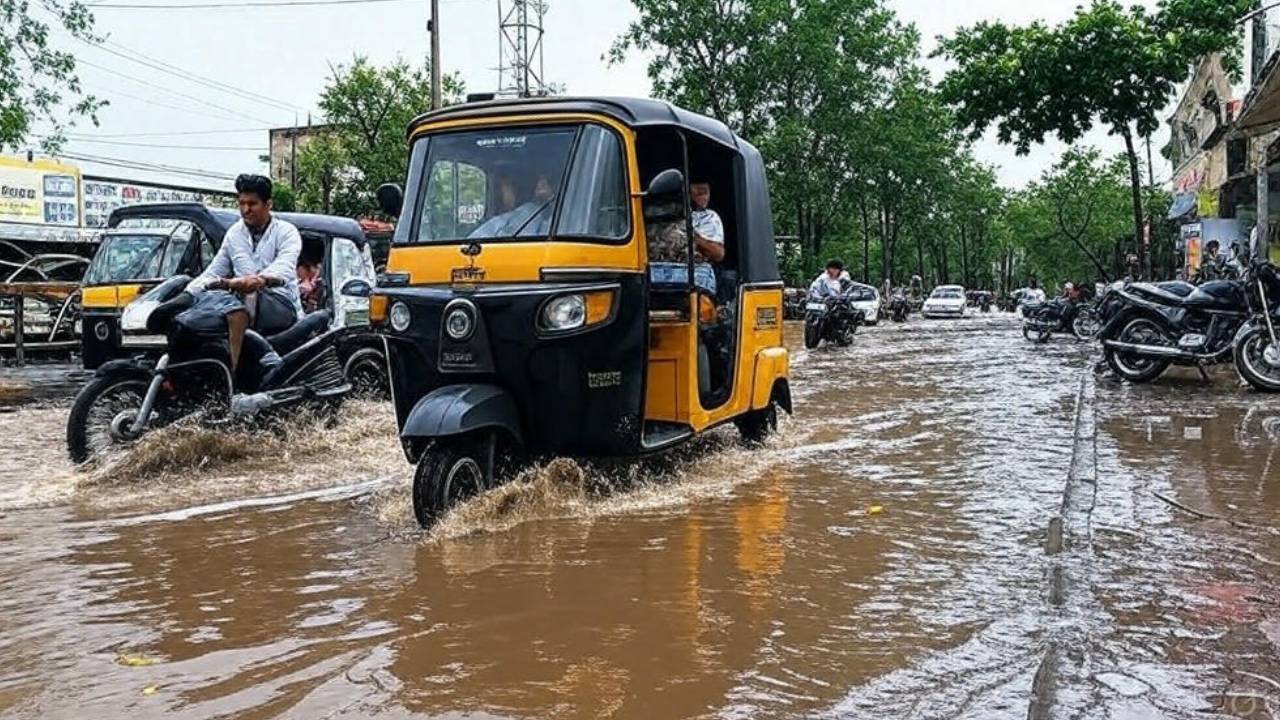india
Defying Curfew, Protesters March in Manipur: Multiple Injuries
injure dozens as curfew-defying protesters clash with security forces in Manipur’s ongoing ethnic tensions.

Guwahati: A clash erupted in Manipur on Wednesday, resulting in injuries to approximately 25-30 individuals as security forces employed tear gas and rubber bullets to disperse a crowd that defied a curfew order and allegedly attempted to breach Army barricades.
The incident unfolded at Phougakchao in the Meitei-majority Bishnupur district, situated close to the Kuki-majority Churachandpur district. Tensions have persisted in these two districts since ethnic violence broke out between the communities on May 3.
Reports indicate that several of the injured have been admitted to hospitals in Moirang, Bishnupur, and the state capital, Imphal.
The Coordinating Committee on Manipur Integrity (COCOMI), a prominent Meitei civil society organization, had called on the public to participate in a march towards the border of Churachandpur. On Wednesday, thousands of protesters responded to this call.
Anticipating potential unrest, authorities imposed a “full curfew” across all five Meitei-majority districts in the Imphal valley: Imphal East, Imphal West, Thoubal, Bishnupur, and Kakching. Security measures were also heightened in both Bishnupur and Churachandpur districts, with joint security forces deployed at Phougakchao and Rapid Action Force personnel mobilized.
COCOMI had previously demanded the removal of Army barricades in a designated “buffer zone” by August 30. “There are Meitei lands beyond the barricades. We want our land back. This is the reason for the march,” stated COCOMI.
In the midst of these developments, the United Naga Council, Manipur’s apex Naga organization, called on the state and central governments to ensure the uninterrupted supply of essential commodities across the state. In a statement, the UNC emphasized the need to halt unwarranted checks, frisking, detentions, unloading of essential goods, and various restrictions imposed on Naga people. Additionally, they urged the immediate lifting of the “economic blockade” imposed by the Committee on Tribal Unity, a Kuki-Zo organization, on two national highways, in the interest of all communities residing in the state.
india
More Than 110 Arrested in West Bengal’s Murshidabad Amid Violent Protests Over Waqf Act
In a troubling turn of events in West Bengal’s Murshidabad district, authorities have detained over 110 individuals following violent clashes linked to protests against the recently passed Waqf (Amendment) Act. The unrest, which erupted in the Muslim-majority region, has left communities shaken and sparked widespread concern about escalating tensions. What Sparked the Violence? The Waqf […]

In a troubling turn of events in West Bengal’s Murshidabad district, authorities have detained over 110 individuals following violent clashes linked to protests against the recently passed Waqf (Amendment) Act. The unrest, which erupted in the Muslim-majority region, has left communities shaken and sparked widespread concern about escalating tensions.
What Sparked the Violence?
The Waqf (Amendment) Act, recently approved by India’s Parliament, aims to streamline the management of Waqf properties—lands and assets donated for religious or charitable purposes in the Muslim community. While the legislation promises better transparency and protection of heritage sites, it has faced strong opposition from some groups who fear it could undermine their rights. In Murshidabad, these concerns boiled over into protests that quickly turned chaotic.
Demonstrators took to the streets, voicing their frustration, but the situation spiraled when some resorted to violence. Reports describe mobs torching police vehicles, hurling stones at security forces, and blocking key roads, including National Highway 12. The chaos also disrupted train services, leaving passengers stranded and adding to the region’s turmoil.
A Community in Distress
For the people of Murshidabad, this unrest hits close to home. The district, known for its rich cultural history, is now grappling with division and fear. “It’s heartbreaking to see our town like this,” said a local shopkeeper, who asked to remain anonymous. “We want peace, but emotions are running high, and it’s hard to know what’s next.”
The protests have also drawn criticism from political leaders. Some, like BJP’s Suvendu Adhikari, have called for strict action against those involved, while others urge dialogue to address the community’s concerns. West Bengal Chief Minister Mamata Banerjee has promised to meet with religious leaders to ease tensions, but the path to calm remains uncertain.
Authorities Respond Swiftly
To restore order, police and Border Security Force (BSF) personnel were deployed across Murshidabad’s Jangipur subdivision, where much of the violence unfolded. Authorities have imposed Section 144, banning gatherings, and suspended internet services to curb the spread of rumors. “We’re working to ensure safety and prevent further incidents,” said a senior police officer. “Raids are ongoing to apprehend those responsible.”
Among the arrests, 70 people were detained in Suti, and 41 in Samserganj, two of the hardest-hit areas. A teenage boy, allegedly injured during the clashes, is receiving treatment in Kolkata, adding a somber note to the crisis.
Why the Waqf Act Matters
The Waqf Act controversy isn’t just a local issue—it’s part of a broader national debate. Supporters argue the amendments will modernize property management and reduce corruption, benefiting communities in the long run. Critics, however, see it as an overreach that could disrupt longstanding traditions. This divide has fueled protests not only in West Bengal but also in states like Maharashtra and Kerala.
What’s Next for Murshidabad?
As Murshidabad picks up the pieces, the focus is on healing and rebuilding trust. Community leaders are calling for calm, urging residents not to fall for misinformation circulating online. Meanwhile, the Supreme Court is set to hear challenges to the Waqf Act on April 16, a ruling that could shape the future of this contentious law.
For now, residents hope for peace to return to their streets. “We’re a close-knit community,” said a local teacher. “We’ve faced challenges before, and I believe we can come through this together.”
india
UPI Outage Hits India: Paytm, PhonePe, Google Pay Users Face Transaction Woes
On Saturday, April 12, 2025, digital payments across India hit a snag as the Unified Payments Interface (UPI) experienced a significant outage, leaving users of popular apps like Paytm, PhonePe, and Google Pay unable to complete transactions.

On Saturday, April 12, 2025, digital payments across India hit a snag as the Unified Payments Interface (UPI) experienced a significant outage, leaving users of popular apps like Paytm, PhonePe, and Google Pay unable to complete transactions. From small vendors to daily commuters, millions felt the ripple effects of this unexpected disruption, sparking frustration and conversations online.
What Happened to UPI Services?
Around noon, reports flooded in from cities like Delhi-NCR and beyond, with users struggling to send money, pay bills, or make purchases through UPI-powered apps. According to Downdetector, an outage-tracking platform, over 1,000 complaints were logged by midday, highlighting the scale of the issue. Social media platforms buzzed with posts from exasperated users, many sharing screenshots of failed transactions and error messages.
The outage primarily affected three major players in India’s digital payment space: Paytm, PhonePe, and Google Pay. While some users reported intermittent issues, others found the apps completely unresponsive, disrupting everything from grocery shopping to bill payments.
Why Did UPI Go Down?
The National Payments Corporation of India (NPCI), which oversees UPI, has not yet issued an official statement on the cause of the April 12 outage. However, past incidents, like a similar disruption on April 1, 2025, pointed to intermittent technical glitches or bank-related issues, such as annual closing procedures affecting services. Speculation among users suggests server overloads or maintenance hiccups, but without confirmation, the exact reason remains unclear.
How Users Reacted
The outage turned X into a sounding board for frustrated UPI users. “Trying to pay for lunch, but #UPIDown again! What’s going on?” one user posted. Another quipped, “Guess it’s time to dig out the cash—Paytm, PhonePe, and Google Pay all out!” The disruption even sparked a wave of memes, with some humorously suggesting a return to bartering.
For many, the outage was more than an inconvenience. Small businesses relying on UPI for quick transactions faced delays, while individuals missed deadlines for utility payments. The incident underscored how deeply integrated UPI has become in India’s daily life, handling billions of transactions monthly.
What to Do During a UPI Outage
If you’re caught in a UPI downtime, here are a few workarounds to consider:
- Try Alternative Apps: Switch between apps like BHIM or other bank-specific UPI services, as not all platforms may be affected simultaneously.
- Use Net Banking: For urgent transfers, IMPS, NEFT, or RTGS via net banking can be reliable alternatives.
- Carry Cash: As a last resort, keeping some cash handy can save the day for small transactions.
The Bigger Picture
UPI’s role in India’s digital economy is massive, processing over 80% of retail payments nationwide. With record-breaking transaction volumes—January 2025 alone saw 16.99 billion transactions worth ₹23.48 lakh crore—outages like this highlight the need for robust infrastructure to handle growing demand. While NPCI has resolved past disruptions quickly, recurring issues raise questions about system reliability and scalability.
As India pushes toward a cashless future, ensuring uninterrupted digital payments is critical. For now, users are left hoping for a swift fix and clearer communication from NPCI to restore confidence in the system.
Bidar
Heavy Rain Hits Bidar: Thunderstorms Bring Relief and Disruption
On Thursday, April , 2025, Bidar city and several parts of the surrounding taluk experienced a refreshing yet powerful thunderstorm accompanied by heavy rain. According to a recent report by Prajavani, the downpour brought a much-needed break from the heat, cooling down the region and leaving residents with mixed feelings of relief and concern. The […]

On Thursday, April , 2025, Bidar city and several parts of the surrounding taluk experienced a refreshing yet powerful thunderstorm accompanied by heavy rain. According to a report, the downpour brought a much-needed break from the heat, cooling down the region and leaving residents with mixed feelings of relief and concern.
The rain, paired with rumbling thunder, swept across multiple areas, offering a soothing change in weather. While no injuries or fatalities were reported, the storm did leave its mark. In Chikli (J) village of Aurad taluk, fierce winds knocked down an electric pole, hinting at the intensity of the weather event. Thankfully, the damage was minimal, and life continued with little interruption.
For the people of Bidar, this sudden burst of rain was a welcome surprise after days of warm weather. The stormy skies not only lowered temperatures but also painted a dramatic picture across the region. As the clouds rolled in, they brought a sense of calm to some, while others kept an eye out for any potential disruptions.
This weather shift highlights how unpredictable nature can be, especially in early spring. For those in Bidar, it’s a reminder to enjoy the cool moments while staying prepared for whatever the skies might bring next. Keep checking back for more updates on how this rainy spell impacts the area!
-

 india2 years ago
india2 years ago“Major Crash of Sukhoi Su-30 and Mirage 2000 Fighter Jets in Madhya Pradesh”
-

 Sports2 years ago
Sports2 years agoWFI meetings on April 16, elections likely to be discussed
-

 india1 year ago
india1 year agoPM Modi Meets Deve Gowda for Seat Sharing Talks
-

 india1 year ago
india1 year agoBengaluru: False threat to bomb Raj Bhavan
-

 india2 years ago
india2 years ago“AIMIM to Contest 50 Seats in Upcoming Telangana Assembly Elections”
-

 Entertainment1 year ago
Entertainment1 year agoAnant Ambani: Controversy at the Ambani Pre-Wedding Bash
-

 Entertainment2 years ago
Entertainment2 years agoRajinikanth is Moideen Bhai in ‘Lal Salaam’
-

 Videos2 years ago
Videos2 years agoBidar News : Press Meet Organized By Zilla Kannada Sahitya Parishad














